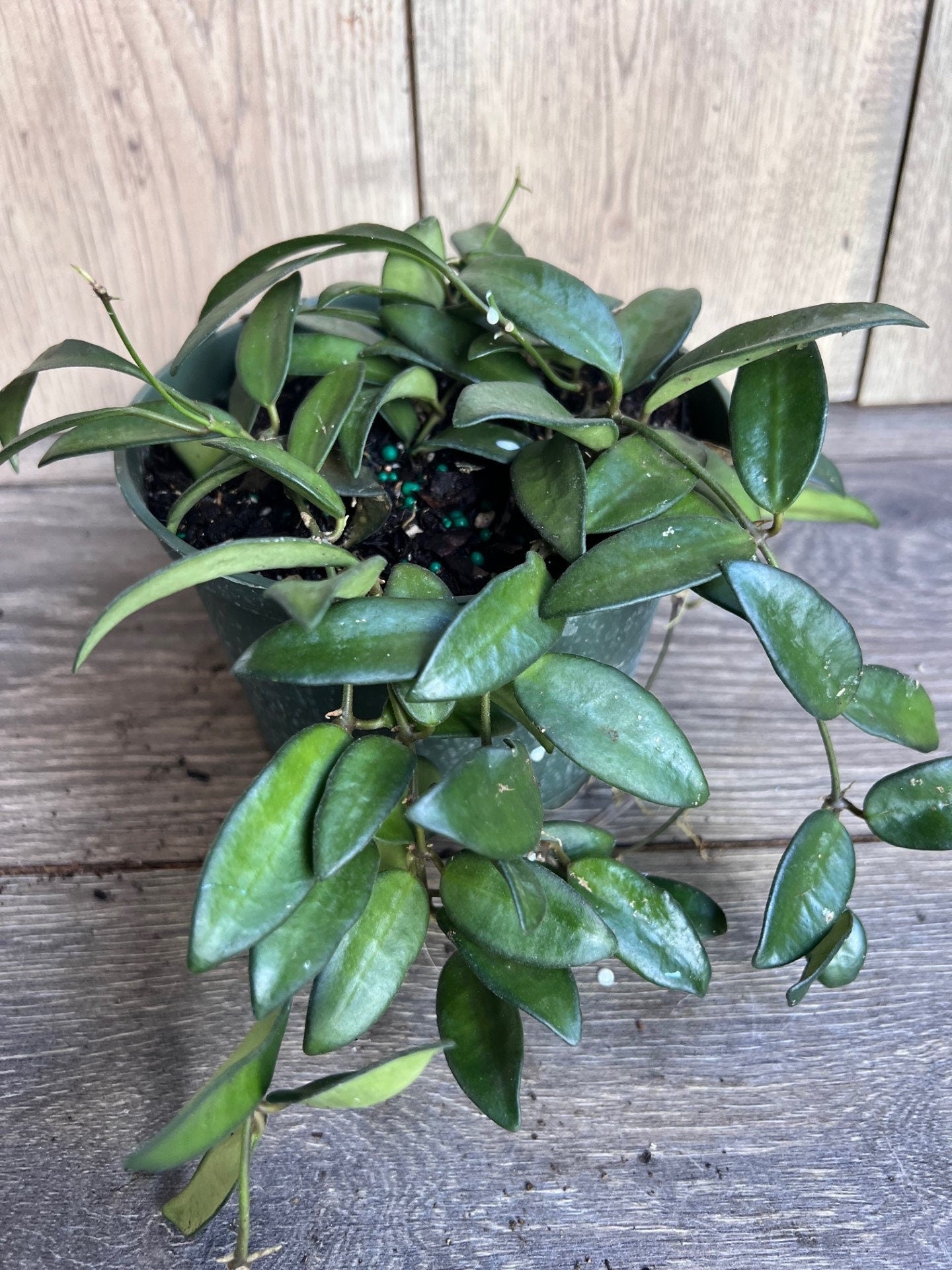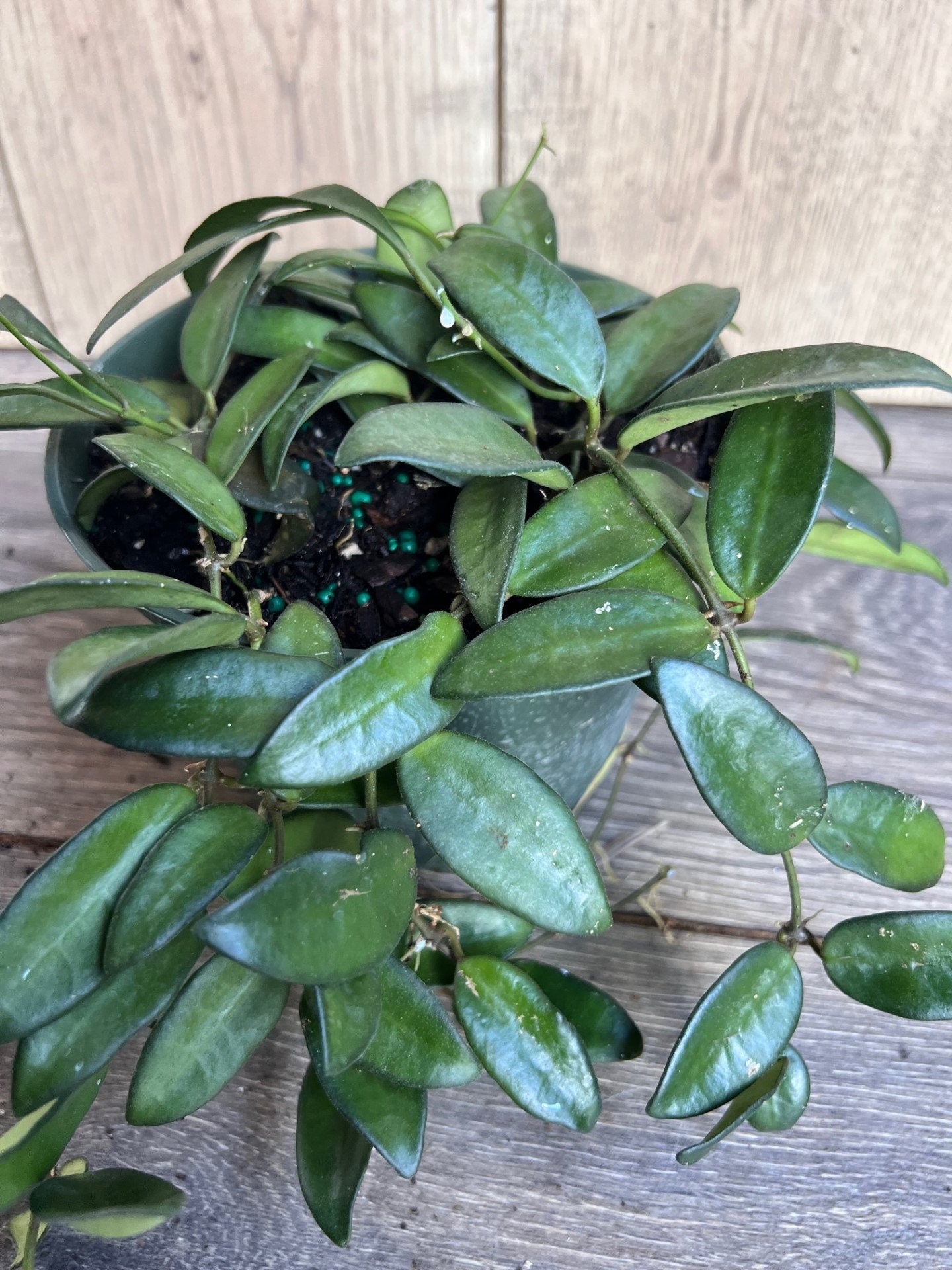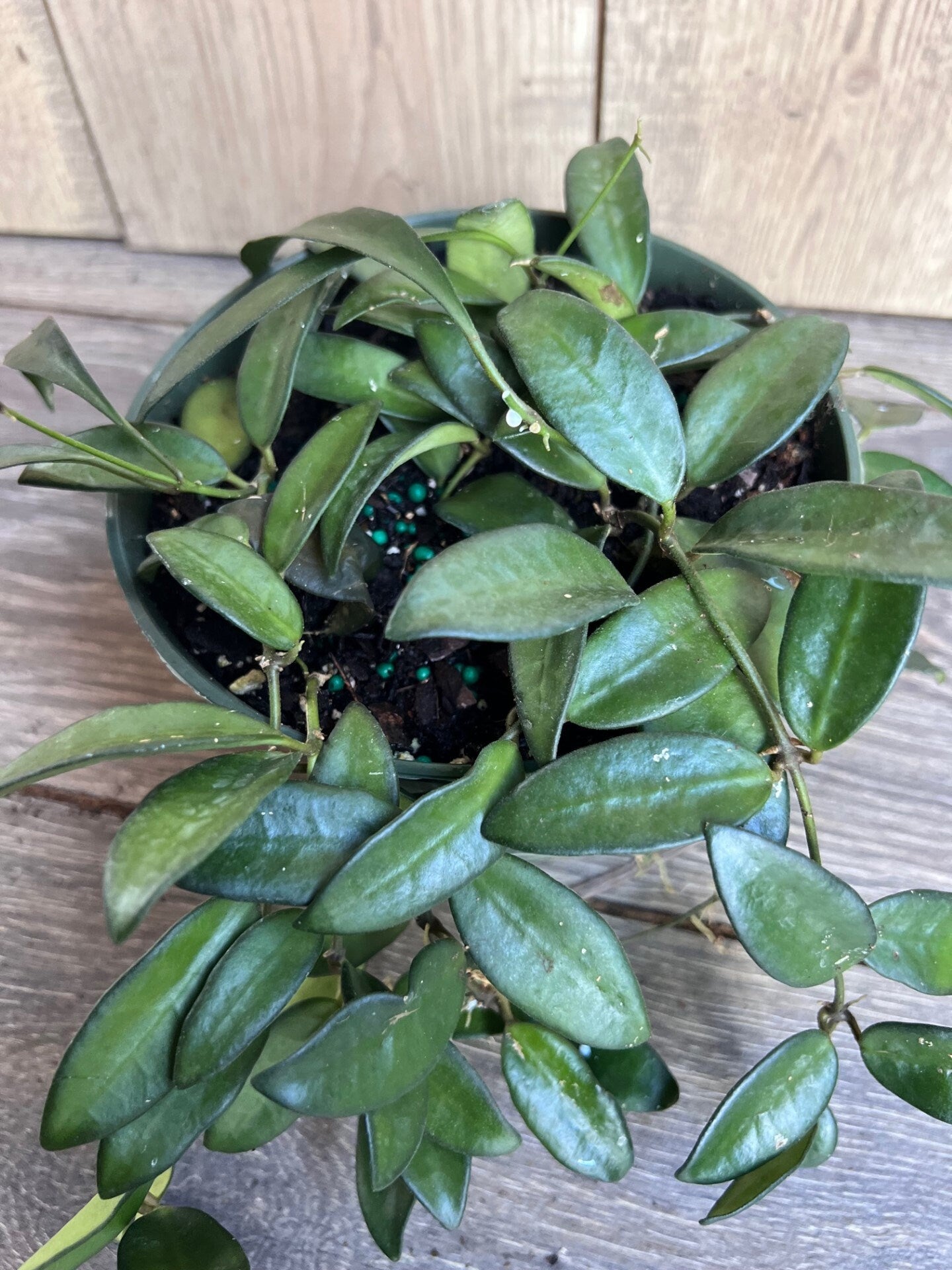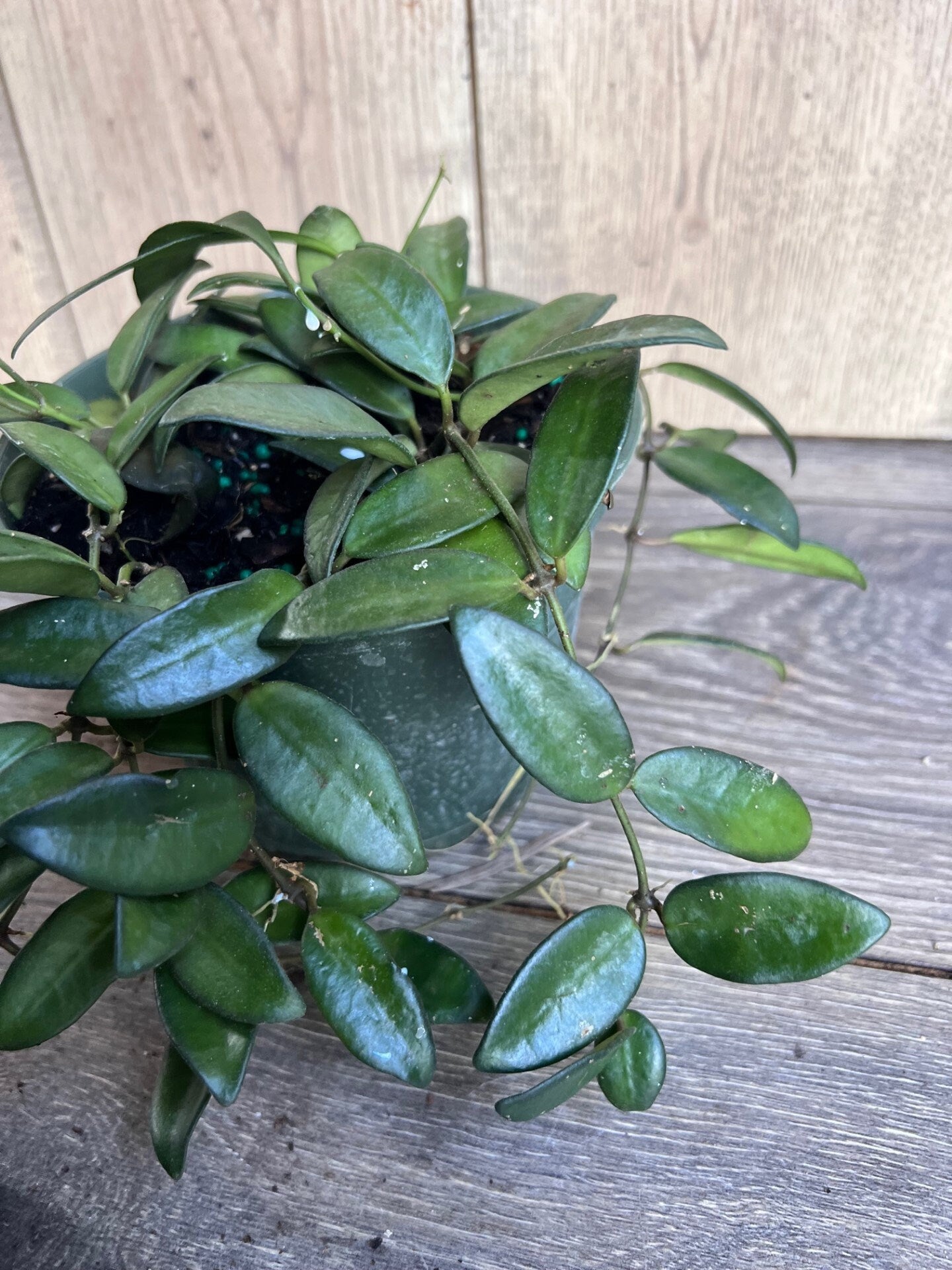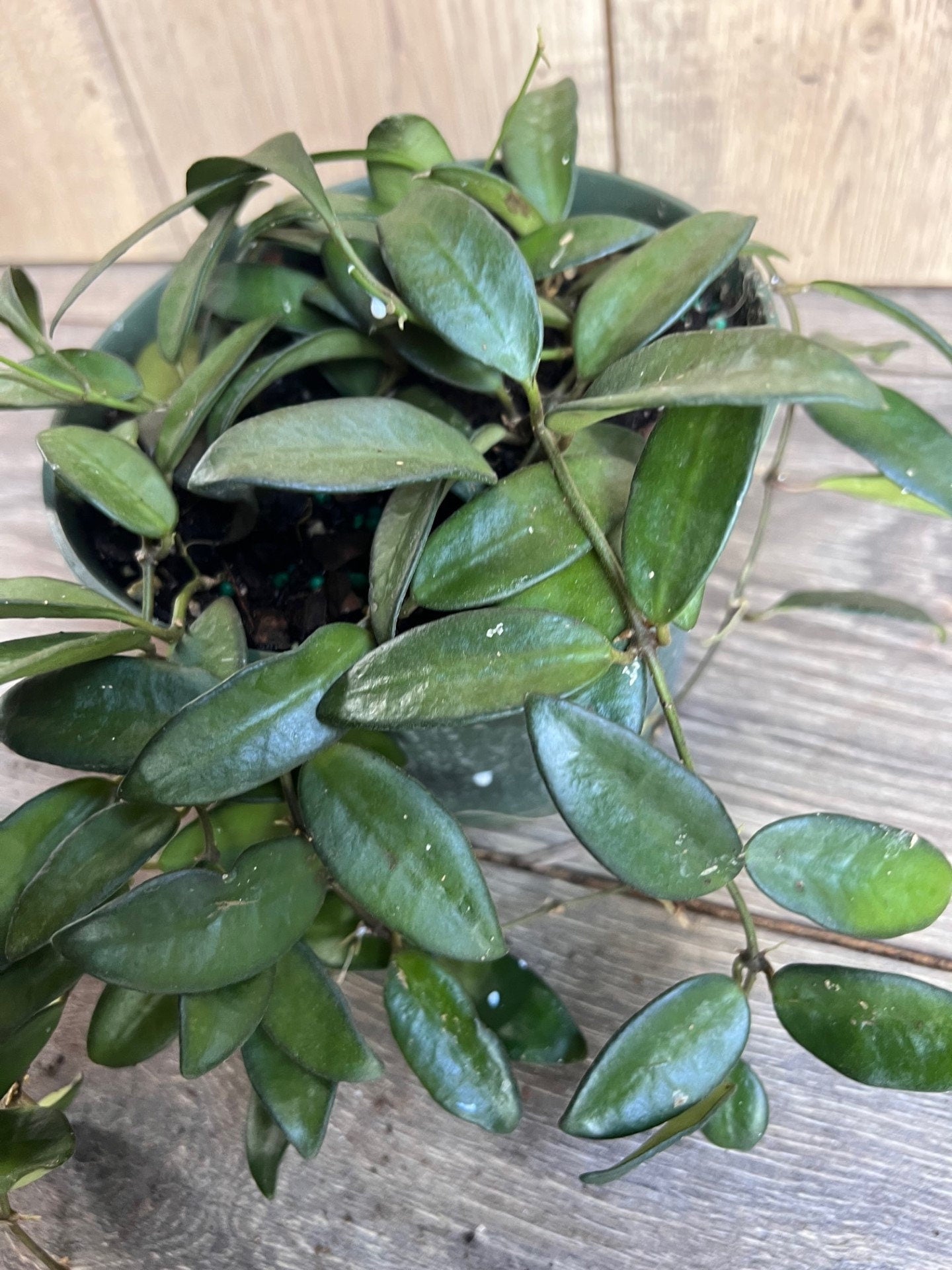1
/
of
6
Hoya Crassipetiolata 6" Pot
Hoya Crassipetiolata 6" Pot
Regular price
$26.28 USD
Regular price
$35.04 USD
Sale price
$26.28 USD
Unit price
/
per
Shipping calculated at checkout.
Couldn't load pickup availability
Hoya crassipetiolata is a captivating, slow-growing species known for its thick, succulent-like leaves and unique waxy appearance. Its dark green, oval-shaped leaves have a slightly textured surface, giving it a robust, almost leathery feel. This Hoya produces beautiful clusters of star-shaped flowers, typically white or pale pink, often with a sweet, pleasant fragrance. It is a relatively easy-care plant, making it suitable for both beginners and experienced plant owners.
Key Care Tips for Hoya crassipetiolata:
1. Light Requirements
- Bright, Indirect Light: Hoya crassipetiolata thrives in bright, indirect light. While it can tolerate lower light levels, its growth may slow, and it may not bloom as well. Direct sunlight can scorch its leaves, so avoid placing it in direct sun.
- Encourage Flowering: To promote blooming, provide ample bright, indirect light. This species tends to flower better under these conditions.
2. Watering
- Moderate Watering: With its succulent-like leaves, Hoya crassipetiolata stores water and does not require frequent watering. Allow the top 1-2 inches of soil to dry out before watering. Water thoroughly, ensuring proper drainage.
- Avoid Overwatering: Overwatering can lead to root rot. Reduce watering in winter when the plant's growth slows. It is more drought-tolerant than overwater-tolerant, so it’s better to underwater than overwater.
3. Humidity
- Moderate to High Humidity: While it enjoys moderate to high humidity, Hoya crassipetiolata can adapt to average indoor humidity. If the air is very dry, especially in winter, consider using a humidifier or misting the leaves occasionally.
- Good Ventilation: Ensure adequate air circulation to prevent fungal issues, especially in humid environments.
4. Temperature
- Warm Temperatures: Hoya crassipetiolata prefers warm conditions, ideally between 60°F and 85°F (15°C to 29°C). Keep it away from cold drafts and avoid temperatures below 50°F (10°C), as it is sensitive to cold.
- Stable Environment: Avoid placing it near air conditioners, heaters, or windows with fluctuating temperatures.
5. Soil Requirements
- Well-Draining Soil: Use a cactus or succulent mix, or amend regular potting soil with perlite or orchid bark to improve drainage. This helps prevent root rot.
- Slightly Acidic Soil: Aim for a soil pH between 5.5 to 7 (slightly acidic to neutral).
6. Fertilizing
- Monthly Feeding: During the growing season (spring and summer), feed the plant monthly with a balanced, diluted liquid fertilizer or a houseplant-specific fertilizer. Dilute to half strength to avoid overfeeding.
- Reduced Feeding in Fall/Winter: As growth slows in cooler months, reduce or stop fertilizing altogether.
7. Pruning and Maintenance
- Light Pruning: Prune away dead or yellowing leaves to maintain its appearance. Regularly trim long or unruly stems to encourage bushier growth.
- Encourage Vining: Hoya crassipetiolata is a vining plant, so you can train it along a trellis or allow it to cascade in a hanging pot.
8. Repotting
- Repotting Frequency: This species grows slowly, so repot every 2-3 years or when it becomes root-bound. Use a pot that is just slightly larger (1-2 inches) than the current one.
- Good Drainage: Ensure the new pot has proper drainage to prevent waterlogging.
9. Pest Control
- Common Pests: While generally pest-resistant, keep an eye out for mealybugs, aphids, spider mites, or scale insects. Treat infestations with insecticidal soap or neem oil.
- Prevent Fungal Issues: Good air circulation is key to preventing fungal diseases, especially when humidity is high. Avoid wetting the leaves when watering.
10. Flowering
- Fragrant Blooms: Hoya crassipetiolata produces small, star-shaped flowers that are usually white to pale pink with a sweet fragrance. Blooms typically appear in late spring or summer.
- Patience for Flowers: It may take several years for young plants to bloom. Once established, it may flower annually. To encourage flowering, ensure the plant receives bright, indirect light and is not exposed to stress factors like sudden temperature changes.
11. Toxicity
- Non-Toxic to Pets: Hoya crassipetiolata is safe for homes with pets, as it is non-toxic to cats and dogs.
Share
